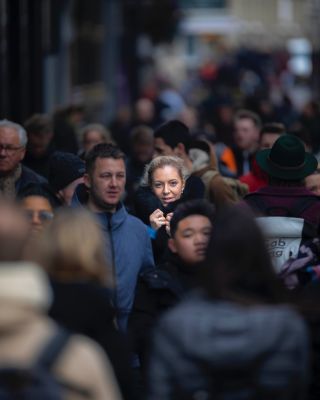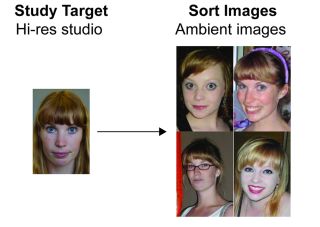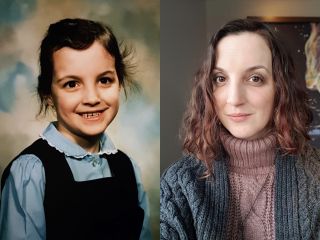- Super-recognizers have an exceptional ability to perceive and recognize faces.
- 2-3 percent of the population qualify as super-recognizers. Many hide their ability to avoid making others uncomfortable.
- The University of New South Wales has developed a screening test to help you determine if you are a super-recognizer.
A manager at a local bookstore stopped to ask if I needed any help, then paused.
“Is your name Ainsley?” she asked.
“Yes, it is!” I answered, surprised.
“You probably don’t remember me, but I used to manage the bookstore in Corner Brook. You shopped there on Saturdays with your family.”
Corner Brook is my hometown, and she was right: I didn’t remember her. I had moved away 30 years earlier when I was only 8 years old.
“You were able to recognize me now from seeing me in passing as a child?!” I said. “You have an unbelievable memory!”
“Oh, it’s nothing special,” she replied. “I’m just good with faces.”
Though she might have downplayed her feat, she is in all likelihood a super-recognizer, part of a small segment of the population with an exceptional memory for faces.
What is a Super-Recognizer?
Human beings are hard-wired to recognize faces. A whole region of the human brain—the fusiform gyrus—is devoted to analyzing the faces we see and recalling the ones we’ve seen before. We’re so primed to pick out faces that we see them even where they don’t exist.

Psychologists once assumed that everyone had more or less the same ability to identify faces unless they suffered a brain injury or neurological illness that damaged the fusiform gyrus. In the early 2000s, though, researchers realized that some people are born with very poor facial recognition, a condition known as prosopagnosia. And if a small number of people are born with a terrible memory for faces, they reasoned, perhaps there are others who are born with a phenomenal memory for faces.
Since then, experts have come to believe that facial recognition ability lies along a bell curve, like IQ and other human capacities. The vast majority of us are somewhere in the middle, but a scattering of people fall at the extreme ends of the spectrum, with exceptionally good or exceptionally weak face identification skills. The top 2 to 3 percent of this bell curve are called super-recognizers. They excel at two tasks:
- Face perception. The ability to match images of the same face to each other even if they look different due to age, facial hair, or camera angle.
- Face recognition. The ability to match a face to a name or identity.
What It’s Like to Be a Super-Recognizer
The best super-recognizers describe their talent as a photographic memory for faces. They only need the briefest glimpse to memorize a face, and they store that information for months, years, or even the rest of their lives.
As one super-recognizer, a 26-year-old female Ph.D. student known in the research as CS, explained: “It doesn’t matter how many years pass; if I’ve seen your face before I will be able to recall it.”
Like many super-recognizers, CS hides her extraordinary ability to avoid making other people uncomfortable. “I often pretend not to recognize someone because it scares them if I say, ‘Oh, I remember you, you were behind me in line at a supermarket in 1996 wearing a yellow soccer jersey!’”
Another super-recognizer named Yenny Seo has found her aptitude for faces more awkward since the advent of social media. “I would start a new class in uni,” says Seo, “or I would meet people through social gatherings and I would remember visually what kind of photos I’d seen them in. I’d already be so familiar with them and I’d know in my head: ‘Oh, you are that person’s sibling, or you used to date so-and-so,’ but I also knew it’d be really creepy if I said that out loud, so I’d keep it on the down low and just say: ‘Oh, nice to meet you.’”
How Can You Tell If You’re a Super-Recognizer?
Do you ever find yourself recognizing a stranger you passed on the street years before? Have you ever rattled off the list of movies you’ve seen a particular extra in, only to be met by the blank stares of your friends? If so, you might be a super-recognizer, and the Face Research Lab at the University of New South Wales (UNSW) has developed an online test to help you assess your skills.

The purpose of the test is to unearth the world’s best super-recognizers and determine just how rare this ability really is. The test will give you a few seconds to memorize a photo of a face. You’ll then be asked to find the same face in a new set of photos, but it won’t look the same as the first time you saw it. It might be at a different angle, in different lighting, or with a different expression.
When you finish the test, you’ll be able to compare your results with the tens of thousands of other people who’ve already completed it. You’ll also be able to sign up for the UNSW Face Research Registry to participate in future studies on super-recognizers. Take the UNSW Face Test Here.
Source: How to Tell if You’re a Super-Recognizer | Psychology Today Canada













